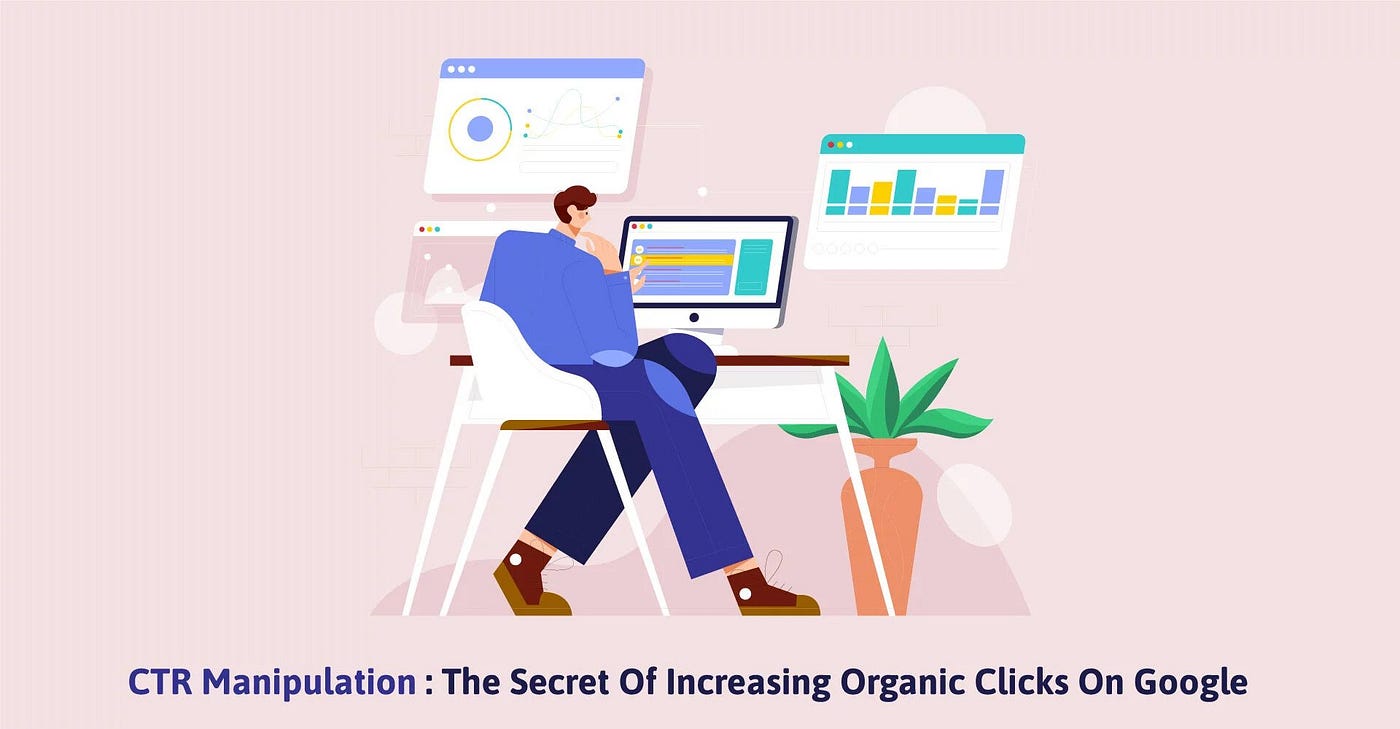CTR Adjustment: A Game Changer for Digital Campaigns
The surge of CTR control has undoubtedly transformed digital advertising and marketing strategies, providing marketing experts with tools to improve interaction and drive website traffic effectively. Strategies such as A/B testing and personalized material have confirmed to generate considerable improvements in click-through prices. Nevertheless, as brand names progressively take advantage of these approaches, the honest implications of such practices call for examination. Stabilizing the quest of enhanced metrics with the demand for genuine target market links postures a vital obstacle for online marketers today. What effects might this stabilizing act hold for the future of digital projects?
Understanding CTR Manipulation
Although click-through rate (CTR) control may seem like a simple tactic in electronic advertising and marketing, it encompasses a variety of strategies targeted at artificially pumping up interaction metrics. This manipulation can take various kinds, including the use of click ranches, crawlers, or misleading ad placements that mislead consumers right into clicking. These approaches can endanger the integrity of performance information, making it testing for marketing experts to evaluate the genuine performance of their projects.
Additionally, CTR adjustment elevates ethical concerns, as it weakens the openness of electronic marketing. The dependence on inflated metrics can cause misdirected marketing decisions, skewing resource allocation and project methods. Organizations might spend heavily in networks and strategies that appear successful however do not generate genuine interaction or conversions.

Advantages of Click-Through Rate Optimization
Enhancing click-through rate (CTR) is vital for improving the efficiency of electronic advertising projects. A greater CTR suggests that a bigger percentage of users are involving with the web content, which can lead to enhanced internet site traffic and much better conversion prices. By enhancing CTR, brands can properly designate their marketing sources to campaigns that generate the highest possible returns.
One of the main benefits of CTR optimization is the possibility for enhanced advertisement positioning and reduced prices - CTR Manipulation. Systems like Google Advertisements award greater CTRs with better advertisement positioning and decreased cost-per-click (CPC), permitting online marketers to extend their budgets even more. Furthermore, a well-optimized CTR can enhance brand visibility, as greater engagement prices typically associate with boosted organic reach

Techniques for Efficient CTR Manipulation
To effectively manipulate click-through prices (CTR), online marketers can employ a selection of calculated strategies that improve individual interaction and drive traffic. One basic strategy is optimizing advertisement duplicate to create engaging and action-oriented language. CTR Manipulation. Making use of solid call-to-action (CTA) expressions encourages individuals to take prompt activity, raising the possibility of clicks
An additional reliable strategy is A/B screening, which enables online marketers to contrast various advertisement variants. By methodically assessing performance metrics, they can recognize which elements reverberate best with the target audience, thus improving their strategies for maximum effect. Furthermore, leveraging visually appealing graphics and concise messaging can record attention swiftly, making it more potential that users will certainly engage.

Finally, maximizing landing pages to make sure a seamless user experience can lower bounce prices and urge more interaction, eventually promoting higher CTR. By integrating these strategies, marketing experts can properly control CTR to achieve their campaign purposes.
Measuring Success in Digital Projects
Determining success in electronic campaigns calls for a clear understanding of essential efficiency indications (KPIs) that line up with project goals. KPIs offer as measurable metrics that aid assess the performance of numerous approaches used throughout the campaign. Common KPIs consist of click-through rates (CTR), conversion rates, cost per procurement (CPA), and roi (ROI)
To efficiently determine success, it is critical to develop certain, quantifiable objectives first of the campaign. If the primary objective is to boost brand understanding, metrics such as impressions and engagement rates might be focused on. On the other hand, projects concentrated on direct sales would take advantage of an extra comprehensive evaluation of conversion prices and revenue produced.
Routine evaluation of these KPIs allows marketing professionals to make data-driven decisions, enhancing their techniques in real-time. Using analytical tools can assist in look at here now tracking performance and identifying fads, permitting speedy changes to boost project end results. Eventually, an extensive strategy to determining success not just highlights areas for improvement however additionally reinforces the overall effectiveness of electronic marketing efforts, driving sustained growth and engagement in the lengthy term.
Future Fads in Digital Marketing
Anticipating the future of electronic marketing exposes a landscape formed by rapid technological improvements and altering customer behaviors. As expert system and artificial intelligence proceed to advance, marketing professionals will significantly take advantage of these innovations to personalize projects at an unprecedented range. Anticipating analytics will certainly make it possible for brands to expect consumer requirements, maximizing advertisement placements and content delivery in real time.
Furthermore, the rise of voice search and clever tools is transforming how consumers connect with digital material. Online marketers will certainly need to adapt their techniques to guarantee exposure across multiple platforms, consisting of voice-activated aides. This change requires a concentrate on conversational advertising and marketing, emphasizing engagement with dialogue instead than standard marketing techniques.
Furthermore, personal privacy worries are prompting adjustments in information collection methods. Openness and moral information use will come to be paramount, driving brands to promote trust and commitment amongst consumers. The recurring advancement of social networks systems will also influence marketing methods, with a heightened emphasis on credibility and user-generated content.
Verdict
In recap, CTR adjustment stands for a considerable development in electronic advertising techniques, using prompt advantages with improved interaction metrics. The continuous evolution of electronic marketing will depend on this delicate interaction, forming the future landscape of brand-consumer interactions.